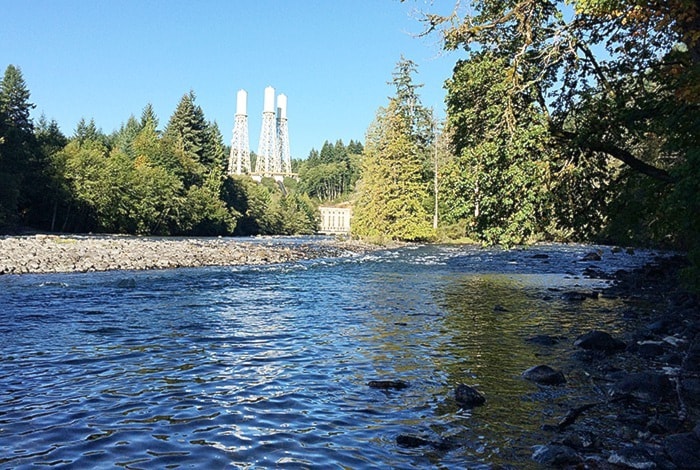While Vancouver Island’s drought officially continues, BC Hydro has begun to re-balance the water levels in the upper and lower Campbell Reservoirs after taking dramatic steps in July to preserve downstream flows in the Campbell River.
With water levels critically low throughout the system and one of their two generators off-line for maintenance and capital upgrades, Hydro officials faced the possibility that water flow could be cut off to the river in the event of a major equipment failure to the other generator.
To mitigate that risk, water was released from Buttle Lake and the Upper Campbell Reservoir beginning in July to ensure enough water remained in the lower McIvor Lake reservoir to clear the spillway in the event of a generator failure at the John Hart Power Generating Station.
“Over this past week and over the next few weeks, as we move closer to Generator No. 2 returning to service and the risk decreases, BC Hydro is slowly re-balancing the two reservoirs,” said Stephen Watson, BC Hydro spokesperson.”
McIvor Lake is currently at 177 metres deep and continues to drop, despite the first solid rainfall of the season last week. Based on current forecast data, Hydro officials estimate the reservoir level will fall to 175.5 metres by the end of September.
“At that point both reservoirs will be re-balanced and sharing the pain of a record drought like they were in the first half of July,” Watson said. “As the end of the summer recreation period is upon us and we look back, outside of the increase to Lower Campbell Reservoir/McIvor lake in August that actually provided for good reservoir recreation opportunities, this year’s reservoir elevations have been poor for recreation.”
The Upper Campbell Reservoir/Buttle Lake is currently at 214.45 metres, about 4.5 metres lower than average for this time of year. In August, the average water inflow into the Campbell River system was 13.5 cubic metres per second (m3/s), compared to a historical average of 35 m3/s. BC Hydro has been able to provide slightly more than 28 m3/s down the Campbell River for fish habitat all summer long.
Watson said the rain from the series of storms last weekend helped, but given how dry the land is there was only a moderate amount of run-off and little overall change in the drought conditions. BC Hydro will continue to conserve water into October by providing slightly more than 28 m3/s in the Campbell River, with the hope, subject to inflow from rain, of increasing the Campbell River flow by mid-October for migrating and spawning Chinook salmon.
Elk Falls Canyon fish migration flows
Each year at this time BC Hydro provides nine, 48-hour pulse flows down Elk Falls Canyon to benefit migrating salmon. Elk Falls is a natural barrier to fish passage, though there is good habitat between the generating station and the falls. The pulse flows will happen every Wednesday and Thursday for nine weeks beginning September 16-17, boosting flow levels in the canyon from about 4 m3/s to 7 m3/s. BC Hydro will reduce the flows out of the John Hart generating station an equal amount during these pulses to conserve water and maintain a constant downstream river flow.
BC Hydro advises the public to stay away from the Campbell River upstream of Elk Falls while the pulse flows are taking place. Safety warning signage will be in place.
